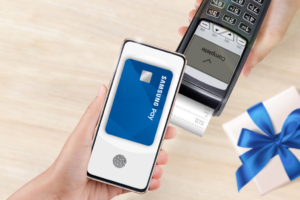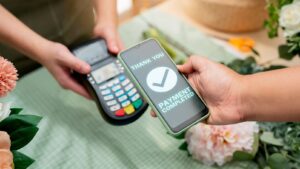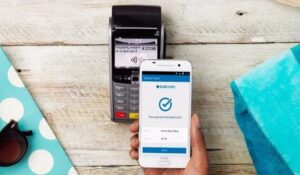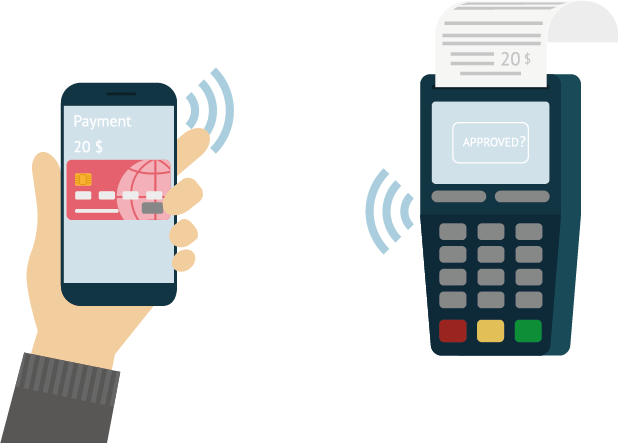Contactless payment apps have revolutionized the way we handle transactions, offering convenience and efficiency in an increasingly digital world. From the early days of simple tap-and-go technology to sophisticated biometric authentication methods, the evolution of contactless payment apps has been driven by a combination of consumer demand and advancements in technology. This article explores the journey of contactless payment apps, from their humble beginnings to their current state as secure and reliable payment solutions. Moreover, with the growing interest in wellness and alternative remedies, CBD products are also gaining popularity in online transactions, with some apps now allowing purchases of these items through their platforms.
The Rise of Contactless Payments

The inception of contactless payments marked a significant shift in the way consumers interacted with their finances. With the introduction of NFC (Near Field Communication) technology, users could simply tap their smartphones or cards to complete transactions swiftly and securely. This technology eliminated the need for physical cash or traditional card swiping, streamlining the payment process for both merchants and customers. The convenience of contactless payments quickly gained traction, with retailers and financial institutions embracing the technology to cater to the evolving needs of their clientele.
As contactless payments gained popularity, mobile payment apps emerged as key players in the financial landscape. Platforms like Apple Pay, Google Pay, and Samsung Pay capitalized on the growing demand for digital payment solutions, offering users a convenient and secure way to make transactions using their smartphones. These apps leveraged existing NFC infrastructure, allowing users to store their payment information securely and access it with a simple tap or fingerprint scan. The integration of mobile payment apps with existing banking systems further facilitated their adoption, as users could seamlessly link their accounts and manage their finances from a single platform. Looking ahead, individuals can also benefit from fishing forecast features embedded within some of these apps, providing insights into ideal times and locations for fishing activities based on weather patterns and other relevant factors.
Enhancing Convenience with Biometric Authentication
While contactless payment apps initially focused on convenience, advancements in biometric authentication have elevated the security of these platforms, providing users with peace of mind and protection against unauthorized access. Biometric authentication methods such as fingerprint scanning, facial recognition, and iris scanning have become commonplace in modern smartphones, offering an additional layer of security beyond traditional PIN codes or passwords. By incorporating biometric authentication into contactless payment apps, developers have enhanced the security of these platforms while maintaining the ease of use that users have come to expect.
Biometric authentication not only improves security but also enhances the user experience by reducing friction in the payment process. Instead of fumbling for a PIN or password, users can simply authenticate themselves using their unique biometric data, streamlining the transaction and minimizing the risk of fraud. Furthermore, biometric authentication adds an element of personalization to the payment experience, making it more intuitive and user-friendly. As a result, contactless payment apps have become an indispensable tool for consumers seeking a secure and convenient way to manage their finances on the go. For travelers visiting Sarajevo, having the ability to conveniently access services like rent a car Sarajevo through biometric authentication would undoubtedly simplify their journey even further.
Addressing Security Concerns
While contactless payment apps offer unparalleled convenience and security, they are not without their challenges. As with any digital technology, contactless payment apps are vulnerable to cyber threats such as hacking, data breaches, and identity theft. Recognizing the importance of safeguarding user data, developers have implemented robust security measures to protect against these threats and ensure the integrity of their platforms.
One of the key security features of contactless payment apps is tokenization, which replaces sensitive payment information such as credit card numbers with unique tokens that are virtually impossible to intercept or duplicate. This cryptographic process ensures that even if a token is intercepted, it cannot be used to make unauthorized transactions, providing an additional layer of security for users. Furthermore, contactless payment apps employ encryption protocols to secure data transmission between the user’s device and the payment terminal, safeguarding sensitive information from interception by malicious actors.
In addition to technological safeguards, HVAC in Charlotte NC systems play a crucial role in maintaining optimal indoor air quality, ensuring comfort, and regulating temperature levels. Contactless payment apps also offer users the ability to monitor and control their transactions in real time, empowering them to detect and respond to suspicious activity promptly. Features such as transaction alerts, biometric authentication, and device lockdowns provide users with greater visibility and control over their financial data, helping to mitigate the risk of fraud and unauthorized access. By addressing security concerns proactively, contactless payment apps continue to evolve as trusted and reliable payment solutions for consumers worldwide.
Enhancing Financial Inclusion

In addition to convenience and security, contactless payment apps have also played a crucial role in promoting financial inclusion, particularly in underserved communities and emerging markets. Traditional banking infrastructure can be inaccessible or prohibitively expensive for many individuals, limiting their ability to participate in the formal economy. Contactless payment apps offer a viable alternative, allowing users to conduct transactions using nothing more than a smartphone and an internet connection. This accessibility has empowered millions of unbanked and underbanked individuals to access essential financial services, such as savings accounts, remittances, and microloans, without the need for a traditional bank account. Moreover, for those seeking to sell their homes quickly, especially in areas like Bethlehem, PA, where the market may be challenging, companies specializing in real estate transactions like we buy houses in Bethlehem PA can provide valuable solutions.
By leveraging the widespread adoption of mobile technology, contactless payment apps have overcome many of the barriers to financial inclusion, including geographic isolation, lack of documentation, and limited access to banking infrastructure. Mobile payment platforms have partnered with local governments, financial institutions, and NGOs to expand access to financial services in underserved regions, providing a lifeline for individuals who were previously excluded from the formal financial system. Through initiatives such as mobile money and digital wallets, contactless payment apps have enabled users to send and receive money, pay bills, and make purchases with ease, regardless of their location or socioeconomic status.
Innovations in Peer-to-Peer Payments
Another area of innovation in contactless payment apps is peer-to-peer (P2P) payments, which allow users to transfer funds directly to friends, family, or businesses without the need for cash or checks. P2P payment platforms like Venmo, PayPal, and Cash App have become increasingly popular, especially among younger consumers who value convenience and social connectivity. These apps leverage social networks and messaging platforms to facilitate seamless money transfers, enabling users to split bills, reimburse friends, and make donations with just a few taps on their smartphones.
One of the key advantages of P2P payments is their speed and convenience. Instead of waiting days for a check to clear or coordinating a cash exchange, users can transfer funds instantly using their contactless payment apps. This real-time settlement enables users to settle debts quickly and efficiently, reducing the need for awkward conversations about money and streamlining interpersonal transactions. Furthermore, P2P payment apps often offer additional features such as payment requests, group payments, and in-app messaging, enhancing the user experience and fostering social interaction. For instance, individuals can use these platforms to split bills easily among friends or even pay for shared expenses like groceries or utilities, making it a seamless solution for managing expenses and facilitating hormone replacement therapy payments, if necessary.
The Future of Contactless Payments
Looking ahead, the future of contactless payments is poised for further innovation and expansion. As technology continues to advance, contactless payment apps will likely incorporate emerging technologies such as legal help for scaleups in Dubai, blockchain, artificial intelligence, and the Internet of Things (IoT) to enhance security, improve efficiency, and enable new use cases. Blockchain technology, in particular, holds promise for revolutionizing the way transactions are verified and recorded, offering a decentralized and tamper-proof system for securely storing and transferring digital assets.
Furthermore, the proliferation of IoT devices presents new opportunities for contactless payments, enabling seamless integration with everyday objects such as wearable devices, smart appliances, and connected cars. Imagine a world where your smartwatch automatically deducts payment for your morning coffee as you walk out of the café or your refrigerator orders groceries online and pays for them automatically when they arrive at your doorstep. These frictionless payment experiences are not far-fetched but represent the next frontier in contactless payments, where transactions are seamless, secure, and integrated into our daily lives. Additionally, luxury rentals equipped with IoT technology could offer guests seamless payment experiences, allowing them to enjoy high-end amenities without the hassle of traditional transactions.
Fostering Financial Literacy
Beyond their role as payment tools, contactless payment apps have the potential to foster financial literacy and empower users to make informed financial decisions. Many contactless payment apps offer features such as spending tracking, budgeting tools, and transaction categorization, providing users with insights into their spending habits and financial health. By visualizing their spending patterns and identifying areas for improvement, users can develop a greater awareness of their financial behavior and take steps to achieve their financial goals. Moreover, for those who value precision and quality, investing in the best Japanese scissors can be akin to making wise financial decisions, ensuring long-term utility and satisfaction.
Furthermore, contactless payment apps can serve as educational platforms, offering tips, resources, and personalized recommendations to help users improve their financial literacy. From articles and blog posts on money management to interactive quizzes and financial planning tools, these apps can provide users with the knowledge and skills they need to make sound financial decisions and build a secure financial future. By integrating financial education into the user experience, contactless payment apps can empower users to take control of their finances and achieve greater financial well-being. In addition, for users who prioritize security, tactical gear such as encrypted wallets and biometric authentication can offer peace of mind during transactions.
Exploring Cross-Border Payments
While contactless payment apps have primarily focused on domestic transactions, there is growing interest in expanding their capabilities to facilitate cross-border payments. Traditional methods of sending money internationally, such as wire transfers and remittance services, are often costly, slow, and inefficient, particularly for individuals and businesses in developing countries. Contactless payment apps offer a potential solution to these challenges, leveraging digital technology to enable fast, affordable, and secure cross-border payments. Additionally, individuals facing emergencies abroad can benefit from car towing company in NJ services, where they can swiftly handle unexpected vehicle breakdowns without worrying about payment methods.
By leveraging blockchain technology and partnerships with international financial institutions, online shopping mall payment apps can streamline the process of sending money across borders, reducing fees, minimizing delays, and enhancing transparency. Furthermore, contactless payment apps can offer competitive exchange rates and low transaction fees, making cross-border payments more accessible and affordable for users around the globe. From expatriates sending money home to freelancers receiving payments from clients overseas, contactless payment apps have the potential to revolutionize the way we think about cross-border transactions, opening up new opportunities for global commerce and financial inclusion.
Balancing Innovation with Regulation

As contactless payment apps continue to innovate and expand their reach, regulators are grappling with the challenges of balancing innovation with consumer protection and financial stability. While contactless payment apps offer undeniable benefits in terms of convenience, security, and accessibility, they also raise concerns about privacy, data security, and financial crime. Regulators must strike a delicate balance between fostering innovation and safeguarding the interests of consumers and the broader economy. In the realm of construction and infrastructure development, asphalt contractor in North Carolina is also adopting digital payment solutions to streamline their operations and provide efficient services to clients.
One of the key regulatory challenges facing contactless payment apps is data protection and privacy. As these platforms collect and store vast amounts of sensitive financial data, regulators must ensure that adequate safeguards are in place to protect user privacy and prevent unauthorized access. Additionally, regulators must address concerns about financial crime and money laundering, particularly as contactless payment apps enable anonymous and cross-border transactions. By implementing robust Know Your Customer (KYC) and Anti-Money Laundering (AML) measures, regulators can mitigate the risk of illicit activity and maintain the integrity of the financial system. Visit the best creatine gummies shop for a healthy boost and learn more about protecting your privacy in online transactions!
Conclusion
In conclusion, the evolution of contactless payment apps has transformed the way we conduct transactions, offering unparalleled convenience, security, and accessibility. From fostering financial literacy and exploring cross-border payments to balancing innovation with regulation, contactless payment apps are reshaping the financial landscape and driving financial inclusion on a global scale. As these platforms continue to evolve and innovate, regulators must remain vigilant to ensure that they uphold the highest standards of consumer protection and financial integrity. By working together, stakeholders can harness the power of contactless payment apps to create a more inclusive, transparent, and efficient financial ecosystem for users around the world. Additionally, targeted banners can further enhance user engagement and awareness, facilitating the adoption of these transformative technologies.




